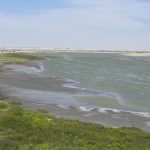On October 21, 2017, the Western Hemisphere Shorebird Reserve Network (WHSRN) Hemispheric Council voted unanimously to approve the designation of the Georgia Barrier Islands (USA) as a Landscape of Hemispheric Importance. The Georgia Barrier Islands thus becomes WHSRN’s 100th site.
Georgia residents, conservation groups, and elected officials came together to celebrate the announcement. U.S. Senator Johnny Isakson, R-GA, said, “This designation as a ‘Landscape of Hemispheric Importance’ by the Western Hemisphere Shorebird Reserve Network is another strong endorsement for Georgia’s beautiful coast and will help keep conservation efforts top-of-mind in the area. I congratulate all who have worked to help protect Georgia’s barrier islands and natural habitats.”
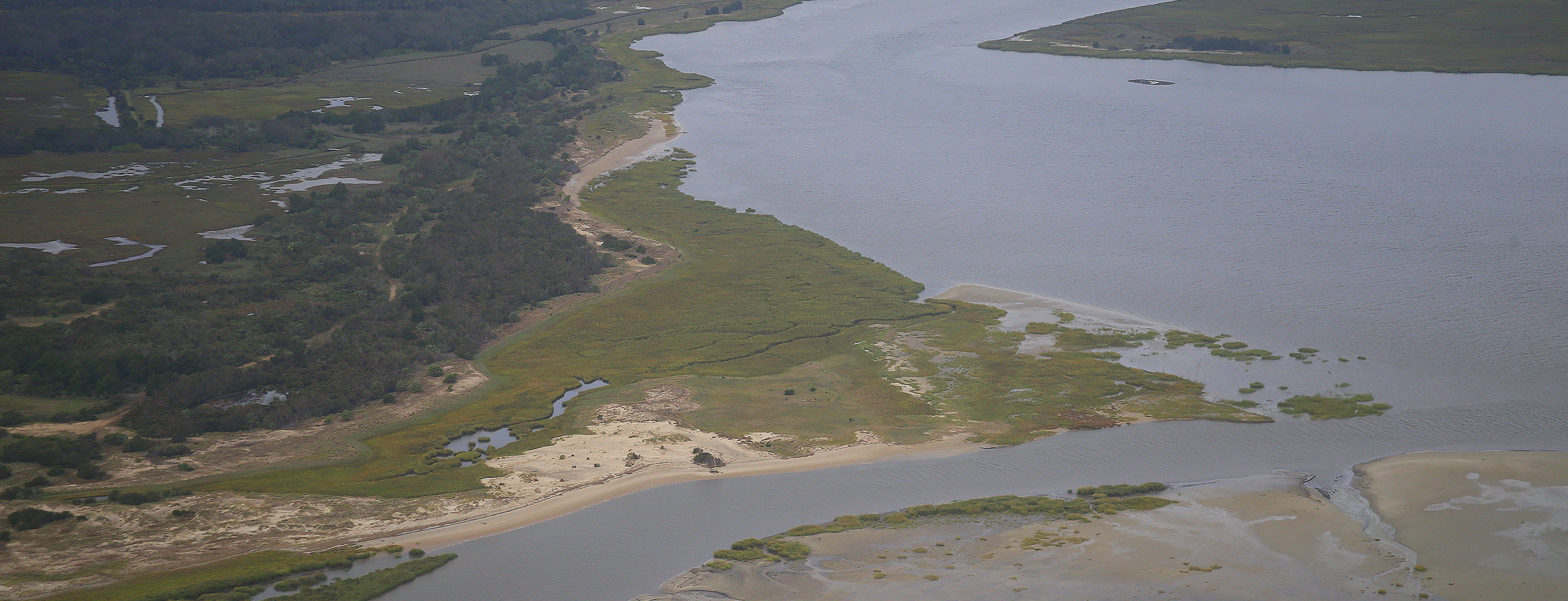
The mosaic of sand, mud, and salt grasses create an environment perfectly suited for shorebirds throughout the year. Photo: Brad Winn.
The Georgia Barrier Islands WHSRN Landscape was designated due to its supporting more than 30% of the biogeographic population of rufa Red Knot Calidris canutus and the Great Lakes breeding population of Piping Plover Charadrius melodus circumcinctus. Based on a band resighting study, the stopover population of rufa Red Knot on southward migration has been estimated at 23,400 birds, while up to 13,775 birds have been documented using the area during northbound migration. The area also holds more than 10% of the biogeographic populations of American Oystercatcher Haematopus palliatus (120 nesting pairs, 1200 wintering individuals), Short-billed Dowitcher Limnodromus griseus (maximum count of 14,608 individuals) and Black-bellied Plover Pluvialis squatarola (midwinter high count of 10,364). Other noteworthy attributes include one of the largest spring gatherings of Whimbrel in North America, and impressive numbers of wintering shorebirds of many species.
The new WHSRN Landscape holds a variety of important habitats for shorebirds, including island beaches and dunes, offshore sand bars and extensive sand and mud flats exposed at low tides. One of the more remarkable attributes of the landscape is the number of natural inlets with no engineered channels. All of the inland sides of the barrier islands include extensive salt marsh, which provides critical foraging habitat for shorebirds throughout the year.
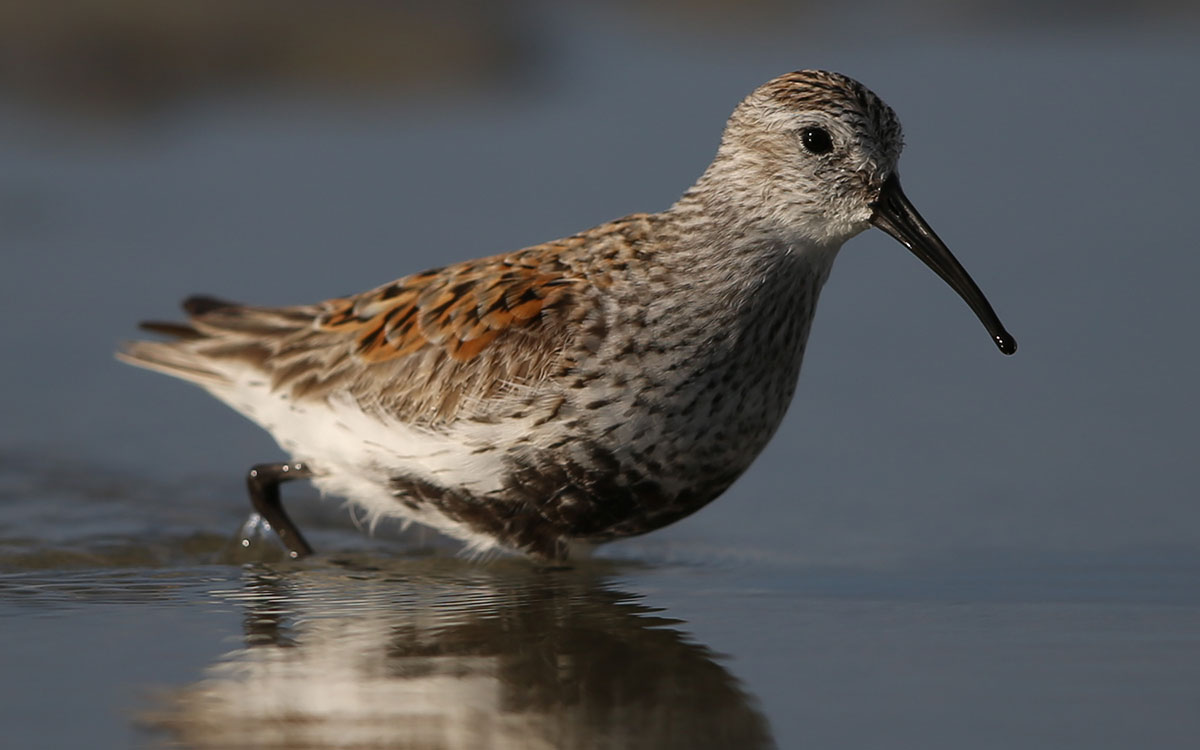
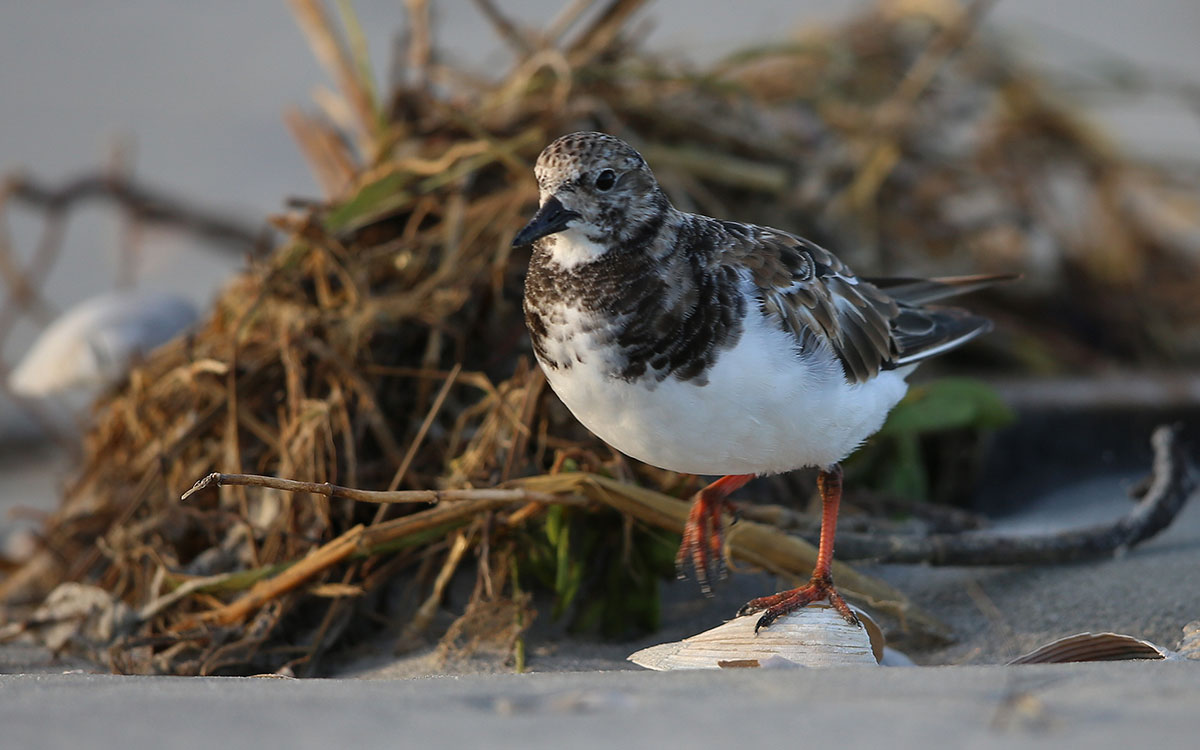
Left: Dunlin (Calidris alpina) are the most abundant wintering shorebird on the Georgia coast, present for eight months of the year. Right: This stunning Arctic-nesting shorebird can be found on all of Georgia’s barrier islands from September to June. Ruddy Turnstone (Arenaria interpres). Photos: Brad Winn.
“As a federal partner involved in the nomination, we recognize the value of Georgia’s diverse habitats for protecting humans and wildlife,” said Chuck Hayes, U.S. Fish and Wildlife Service, Savannah River Complex. “F&WS is committed to continuing to protect the habitats needed for these species to survive.”
Georgia’s barrier islands are owned and managed by a diverse group of private and public entities, many of which have committed to the WHSRN designation. The Georgia Shorebird Alliance (GSA), a collaborative group of biologists, land managers, and organizations devoted to the protection of Georgia’s shorebirds, submitted the nomination. Commitment to the nomination comes from GSA members, including the National Parks Service (Cumberland Island National Seashore, Fort Pulaski National Monument), US Fish and Wildlife Service (Savannah Coastal Refuges Complex), and the privately-owned Little Cumberland Island, St. Catherine’s Island, Little St. Simons Island, and the Cannon’s Point Preserve and Musgrove Preserve on St. Simons Island. Together these comprise 79,709 acres or 32,257 hectares that have been included within the WHSRN Landscape designation.
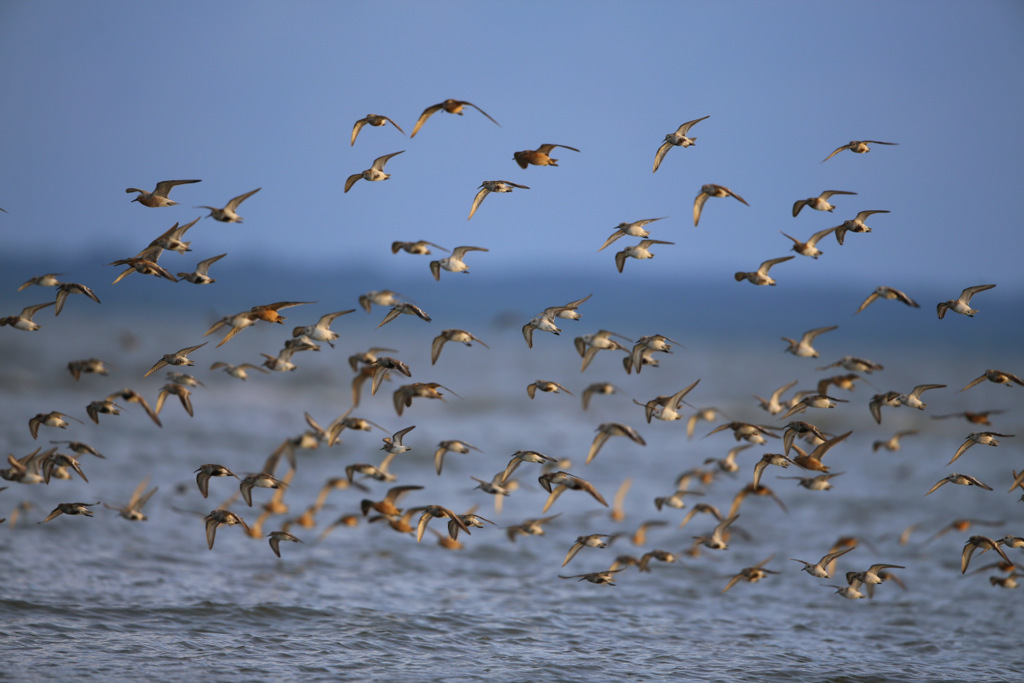
The newly designated Georgia Barrier Islands Landscape of Hemispheric Importance support 35 species of shorebirds in some part or all of their annual migratory life-cycle. Photo: Brad Winn.
“The WHSRN recognition should be celebrated by everyone who knows and cares about this state’s land, water, and wildlife,” said Brad Winn, former program manager for the Coastal Nongame Conservation Section of the Georgia Department of Natural Resources, and now Director of Shorebird Habitat Management at Manomet (a nonprofit that champions better practices in conservation, business sustainability, and science education, and which houses the WHSRN Executive Office). “Whether you live in Atlanta and have a second home in Richmond Hill, grew up hunting and fishing in Macintosh County, or spend just a few weeks visiting Jekyll Island as a tourist from New York, this coveted recognition should make you smile with pride for a job well done. Business leaders, land owners, tourism boards, and nature lovers alike should celebrate the fact that Georgia’s coast supports and protects the habitat used by so many shorebirds for all to see and enjoy.”
With the addition of the Georgia Barrier Islands, there are now 100 WHSRN Sites in 15 countries covering a total of 36.9 million acres (15 million hectares) of shorebird habitat across the Americas. Georgia Barrier Islands becomes only the 3rd WHSRN Landscape, and the first to include an existing WHSRN site, the Altamaha River Delta, designated as a WHSRN site of Regional Importance in 1999 due to holding more than 20,000 shorebirds.
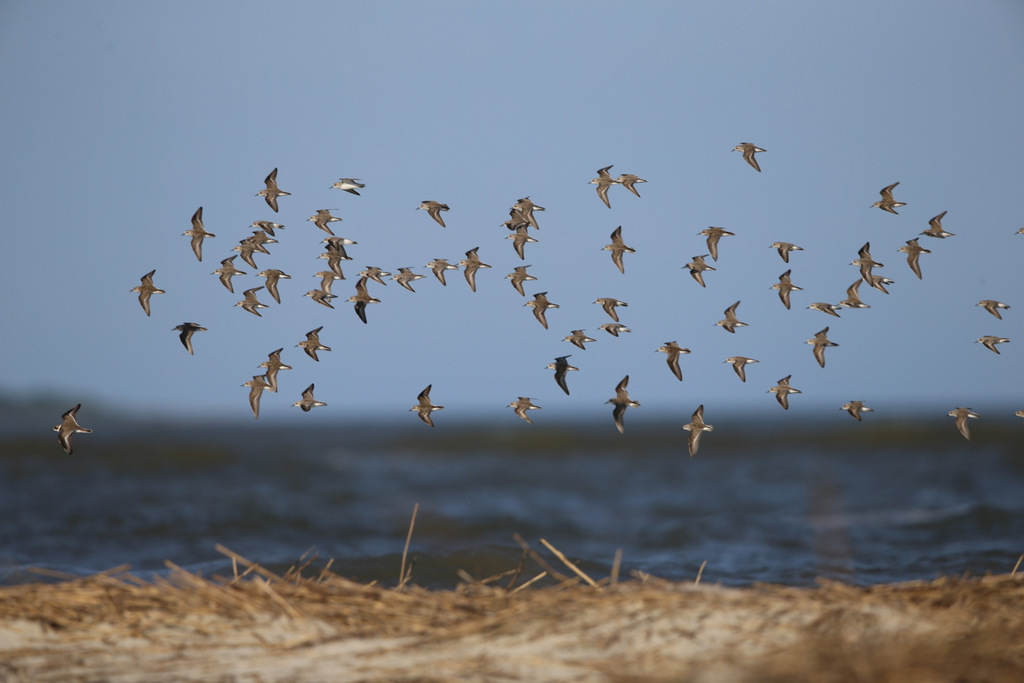
Semipalmated Sandpipers (Calidris pusilla) out of South America stop in to feed on abundant food resources in April and May before continuing on to places as far away as Hudson Bay and Alaska. Photo: Brad Winn.
The WHSRN nomination process of the Georgia Barrier Islands was part of a larger North American project under the Arctic Migratory Birds Initiative (AMBI), led by the Commission for Environmental Cooperation (CEC). The CEC AMBI project has worked to identify and designate important sites for Red Knot Calidris canutus (rufa and roselaari subspecies) and Semipalmated Sandpiper Calidris pusilla, and to engage the communities at these sites in Arctic-nesting shorebird conservation.
“Our coast is unlike any other place on earth,” said Megan Desrosiers, CEO of One Hundred Miles , the Georgia nonprofit organization that shepherded the nomination. “Today’s announcement confirms to the rest of the world what we in Georgia already know: our 100 miles are a wonder of the world – worthy of our pride and deserving of our protection. It is an honor to work with the land owners, governments, and agencies involved in the conservation of our world’s most special habitats.”





